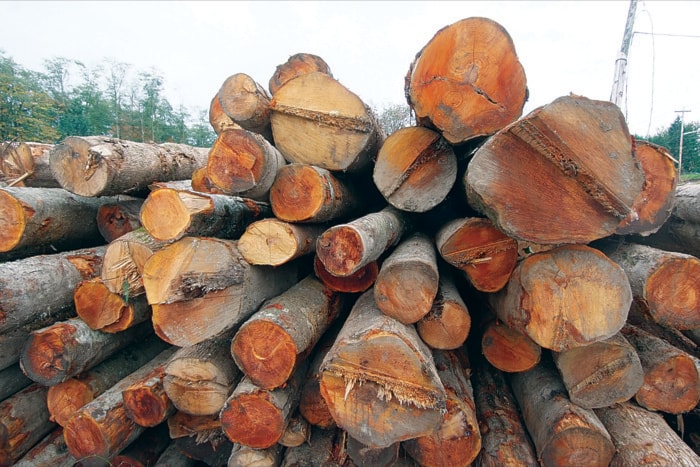Tree cutting in Surrey soared last year, as the city recorded its second-biggest building boom on record.
Figures obtained at the request of The Leader indicate Surrey issued permits to cut 9,893 trees in 2016 – a jump of 1,333 from the year prior.
In fact, over the last seven years, tree cuts have been climbing steadily, from 4,662 in 2009 to this year's figure, which represents a jump of 112 per cent.
Tree cutting became a controversial issue in Surrey between 2000 and 2004, when the city was issuing permits to cut down 9,100 trees per year.
Surrey MP Dianne Watts, then a city councillor, referred to several areas of the city as a “moonscape” because of the vast tracts of clearcut land.
Tree loss became an issue in the mayoralty race in 2005, which Watts won. She enacted the Tree Protection Bylaw in 2006, but it failed to slow the speed of tree cuts.
In fact, the number of trees felled annually continued at a greater rate, with 33,300 bylaw-protected trees coming down in three years (2006-2008) – or 11,100 annually (22 per cent higher than in years prior to the bylaw).
To mitigate the loss, the bylaw requires a two-to-one replacement of trees coming down, or the person cutting has to provide cash-in-lieu of replacement.
That money goes to the city's "green fund" which pays for tree planting throughout Surrey.
The city consistently falls short of the two-to-one rule, and last year, brought in $1.46 million cash in lieu for the green fund.
The number of tree replacements required to be done by the city last year was 15,193. Of that, 7,913 were actually planted.
The number of trees razed or damaged without permission dropped last year after a significant two-year jump in bylaw scofflaws.
Since 2009, illegal cutting has ranged between 30 and 140 per year, with 2014 being the high-water mark for infractions.
There were 69 trees cut down illegally last year, which resulted in $54,000 in penalties.
When a builder comes up short on replacements, they are are required to pay cash-in-lieu of replacement, which also goes to the green fund.
Last year, that cash in lieu was $2.37 million.
A study commissioned by the city four years ago indicates Surrey is losing tree canopy (the amount of property with tree cover).
Research shows a canopy of 40 per cent indicates one aspect of being an environmentally friendly city.
Surrey falls short of that and heading in the wrong direction.
In 2001, 33 per cent of Surrey was covered by tree canopy, the report shows. By 2009, that dropped to 30 per cent and four years later the number had sunk to 27.17 per cent.
It represents a decline in tree canopy by 17.66 per cent over those 13 years.
Surrey is aiming have a 40-per-cent tree canopy by 2058, but it will require some significant changes to turn things around.
Which trees are covered by Surrey's bylaw?
Permits aren’t required for smaller trees.
The trees the city issued permits to cut down last year were at least 30 centimetres in diametre at breast height. Or they were one of a number of protected species, such as Arbutus, Garry Oak, Pacific Dogwood, Pacific Yew, Coast Redwood, Dawn Redwood, Giant Redwood, Maidenchair tree or Monkey Puzzle tree.
Trees such as cottonwood or alder are often referred by council and staff as “scrub” trees. They either don’t have a long life cycle or don’t survive development well.
However, if they are 30 centimetres in diameter at breast height, they require a city permit.
City-initiated cuts don’t require permits, and therefore, are not part of the count.
